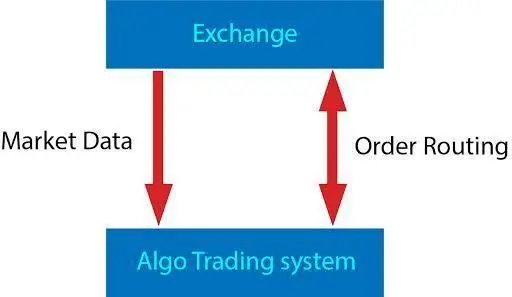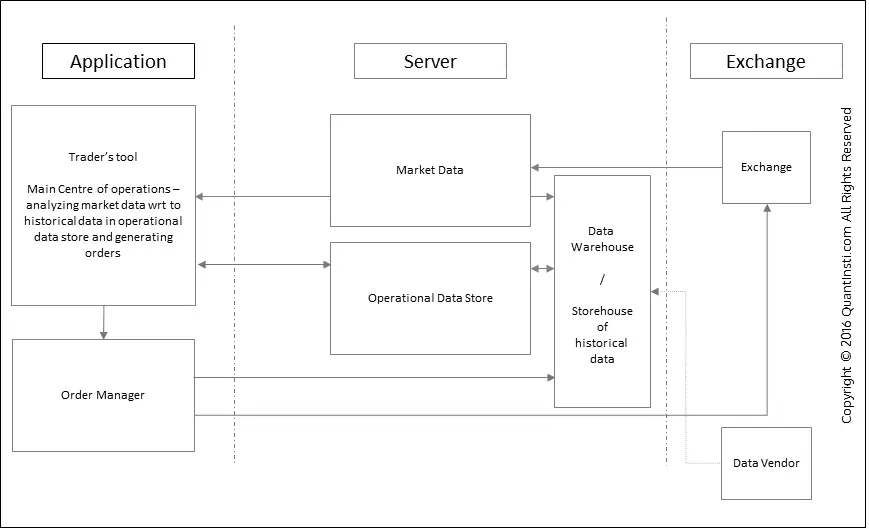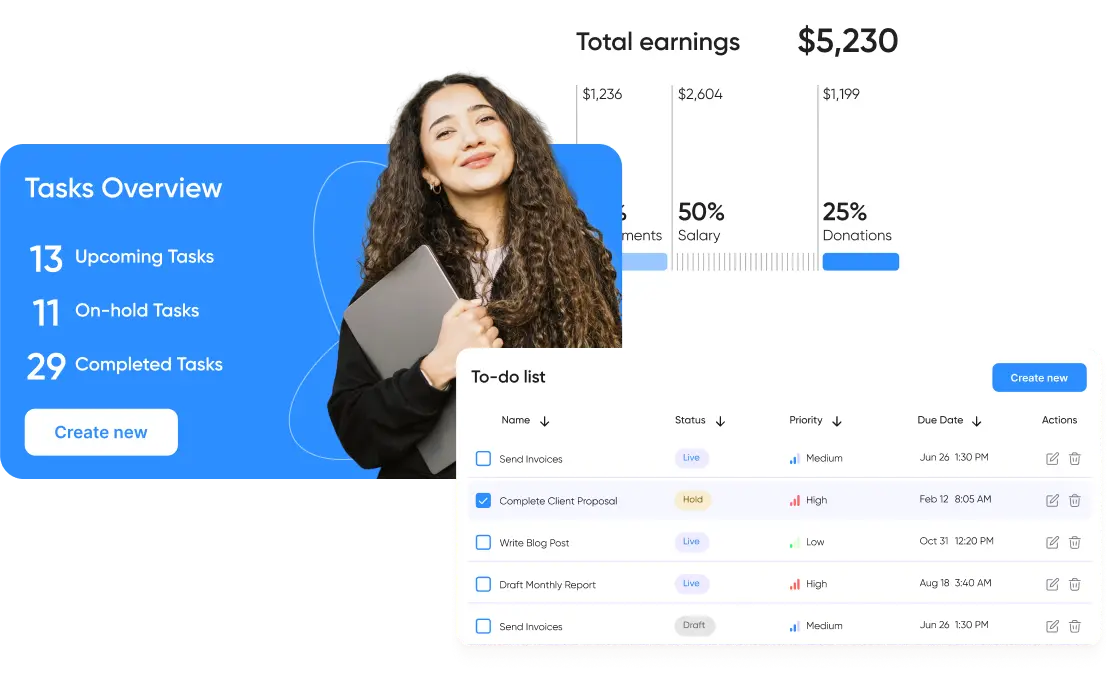FinTech
How to Build a Custom Automated Trading Software
Automated trading software is a set of rules and instructions to determine trading decisions. Stock trading software is responsible for collecting and analyzing market data using technical indicators. Such a system makes trading easier: it helps traders know when and how to sell or buy stocks on a stock market.
Building automated trading software might be challenging, but in this article, we will provide some tips and tricks to help you throughout the process.
Why do you need to automate your trading strategy?
Over the last few years, trading has become one of the most popular sources of income in financial markets. It allows people to achieve complete freedom and unlimited earnings.
Despite many benefits, the manual trading process requires lots of attention and monitoring of many aspects. On the contrary, trading strategy automation contributes to higher performance and makes the trading process more accessible and enjoyable.
An automated trading system allows management of the risks better by spreading it over various instruments.
Advantages of automated trading system:
- minimization of emotions (no risk of making mistakes based on this factor)
- accurate performance of the complex calculations
- allows for backtesting (determines the system's expectancy)
- allows using multiple strategies and accounts at once
The most popular types of trading systems
Traders and investors can trade and monitor stocks in real-time on the trading platform. The form of this platform could be a website, desktop app, or mobile application.
Also, there are two main types of trading platforms:
Commercial platforms - user-friendly systems for traders and investors that include newsfeeds in trading, reports, and helpful resources. Examples of such platforms are Binance and Robinhood systems.
Proprietary platforms - custom trading software designed to adjust specific trading styles and meet customers' requirements. Proprietary platforms are commonly used in financial institutions and banks.
Steps to make an automated trading system
If you are a trader who wants to monetize a strategy, or if you have an idea and specific requirements for trading platforms – you can create a stock market software and make money from it. We highly recommend completing the following steps so that your product will be competitive and valuable.
Before you start the development process you need to choose an algorithmic trading strategy
There are many effective trading strategies, so we will briefly describe the mechanism of the most popular ones below.
Types of Algorithmic trading strategies:
Arbitrage
Arbitrage is a popular strategy that implies profit from varying prices for the same asset in different markets.
Trend-following strategies
The trend-following strategy works by this approach: a trader buys an asset when its price trend increases and then sells when its trend decreases. Such a methodology is one of the simplest to implement because it does not include predictions or price forecasts.
Index Fund Rebalancing
Regarding index funds, there are some periods when rebalancing or readjusting occurs. Rebalancing is adjusting a portfolio's changed asset allocation to match an original allocation defined by an investor's risk and reward profile. This technique aims to protect investors from exposure to undesirable risks. Rebalancing is a comprehensive strategy, so there are several types of it:
- calendar (the least costly but is not responsive to market fluctuations)
- constant-mix ( is responsive but more costly to use than calendar rebalancing)
- portfolio insurance (the short-selling of stock index futures often limits risk.)
Mathematical model-based strategies
Those strategies are beneficial if you want to analyze the change in price and volume of securities in the stock market. Those strategies allow trading on a combination of options and their underlying security.
Mean Reversion or Trading Range
The Mean Reversion theory is based on this concept: an asset's high and low prices are a temporary phenomenon that reverts to its mean value periodically. So, this algorithm buys when an asset price is low, then sells it on the next “bounce” higher. It also allows the trades to be placed automatically when the price of asset breaks in and out of its defined range.
Volume-weighted Average Price (VWAP)
VWAP works by the following principle: it breaks up large orders into smaller chunks using stock-specific historical volume profiles. Short-term traders most commonly use volume-weighted Average Price, but professional traders may also use this strategy to help them determine intraday price trends.
Time Weighted Average Price (TWAP)
The time-weighted average price strategy is similar to the previous one as it breaks up large orders into smaller chunks, but this method uses evenly divided time slots between a start and end time. This strategy aims to execute the order close to the average price between the start and end times. As a consequence, the market impact is minimized.
Percentage of Volume (POV)
This strategy targets a percentage of the market volume within a specified period, thereby controlling the execution pace.
Implementation Shortfall
In trading terms, an implementation shortfall is a difference between the price at which a trader wants to execute an order and the average actual price achieved. This strategy aims to keep the implementation shortfall as low as possible.
Other Non-Usual Trading Algorithms
Besides the most popular trading strategies, there are other algorithms. For example, such algorithms can detect the others on the side used by a sell-side market maker.
Follow regulatory compliance
To provide security to users, ensure that all transactions are compliant with the laws and regulations of the countries involved. The World Bank created a Fintech legislation database that consists of nearly 200 countries around the globe. Using this tool you can get information by different criteria.
Stock market software architecture
Any trading system has its basic architecture. It is an infrastructure where application components can be specified, deployed, and executed and satisfy functional requirements. In this article, we will briefly cover the traditional architecture of stock market software.
Essentially, in a trading system, a computational block interacts with the exchange on two different streams:
- receives market data
- sends requests and receives replays
Any trading system, conceptually, is nothing more than a computational block that interacts with the exchange on two different streams.
- Receives market data
- Sends order requests and receives replies from the exchange.
The exchange of data between Exchange and the Automated trading system is happening by the following principle:

The data received informs the automated trading system about the latest order book, and it can contain some additional information like the last trade.
Nevertheless, the trader may need to look at some old values to decide on the data. In such a case, a conventional system must have a database to store the market data. Also, to be precise, the analysis process should involve data about past trades.
Having regard to all of the above, the traditional architecture of the automated trading system can now be separated and structured in this way:
The exchange(s) – the external world
- The server
- Market Data receiver
- Store market data
- Store orders generated by the user
- Application
- Take inputs from the user including the trading decisions
- Interface for viewing the information including the data and orders
- An order manager sending orders to the exchange
Here you can take a look at the example of traditional architecture according to quantinsti.com

Select a type of software
When it comes to custom trading software development, choosing between two: web and mobile types of software can be challenging. Each has advantages and disadvantages: a mobile trading app allows users to use it everywhere, but a web version of the application could be easier to use due to the specific nature of trading.
You can choose a mobile platform that will target mobile users only or a website that will be available for both: PC and phone users.
Although, the website must be responsive to different screen sizes because if it’s not, mobile users can not enter the website through their mobile devices. The trading website must be adapted to different screen sizes, so users can easily navigate it. Also, It’s quite important to mention that the website version is not that easy to use on mobile phone
Of course, you can choose both options to target more users and make their interaction with the app more enjoyable and accessible.
Enhance the app with 3rd party APIs
API is a “messenger” that processes requests and allows the smooth functioning of enterprise systems. This technology enables interaction between data, devices, and programs.
Here are some examples of APIs that can come in handy:
- for diversity and equity: internationalization and localization support,
- for payment system: PayPal, Stripe, Braintree, and Google/Apple pay for mobile users)
- for financial statistics: currency rate implementation, financial systems, etc.
- for importation to third-party analytics tools: Data Export and Data Warehouse API
- for other purposes: adaptive design, Google Maps, CMS and Admin panel, Wiki engine (for internal instructions, etc)
Security as a priority - DDoS, X-XSS, data backups
Any system is vulnerable to attacks, data theft, or computer viruses. To minimize such risk, an app that processes personal data and confidential information must be well-secured. Together we can find the proper protection solution for your application.
Thinking about security, you should also keep in mind the users' needs and find the balance between the security and usability of the app. For example, you can add biometric security features like fingerprints or a face scanner.
Backtesting and optimization
Backtesting helps to verify how the trading system performed during a specified period. Some traders often make the mistake of entirely relying on the results of backtesting to understand if the system is profitable. Many trading platforms also allow optimization studies. This is a process of improving the trading system or algorithm to reduce costs and increase efficiency.
UX/UI Design and Must-Have features for your automated trading system
In the article “How much does it cost to build a trading app” we broadly discussed the importance of professional UX/UI design and key features to implement in your app to make it competitive on the dynamic market.
Go live
After completing the previous steps, you can launch your app.
Conclusion
In summary, we would like to add some information about the pros and cons of automated trading:
Pros:
- allows minimizing the emotions while trading
- allows for backtesting
- accessible to traders with different levels of experience
- can react automatically to sudden market changes
- allows having multiple accounts
Cons:
- some technical failures can happen: each complex system can have problems that are proportionate to the complexity of such system.
- requires the functionality of monitoring
- can perform poorly (if implemented not properly)
- tech dependence: needs support and maintenance
- overfitting: can create a statistical data model with more data than is necessary)
To minimize the technical issues of such a system, you should pay attention to the following:
- monitoring and audit
- components health check & notifications
- system robustness & service decoupling
- unit and integration test coverage,
- TDD and BDD approach (Test Driven Development and Behavior-Driven Development)
- documented backup and recovery procedures
Stock market Software development for financial transactions is a very complex process because all the development concerning money should be performed precisely and only by professionals under high control. Otherwise, you and your users can risk their private data and money.
To avoid possible issues, we recommend you delegate this process to a dedicated team with experts in FinTech Software.
Browse our case studies and get actionable insights to drive your success
See more
